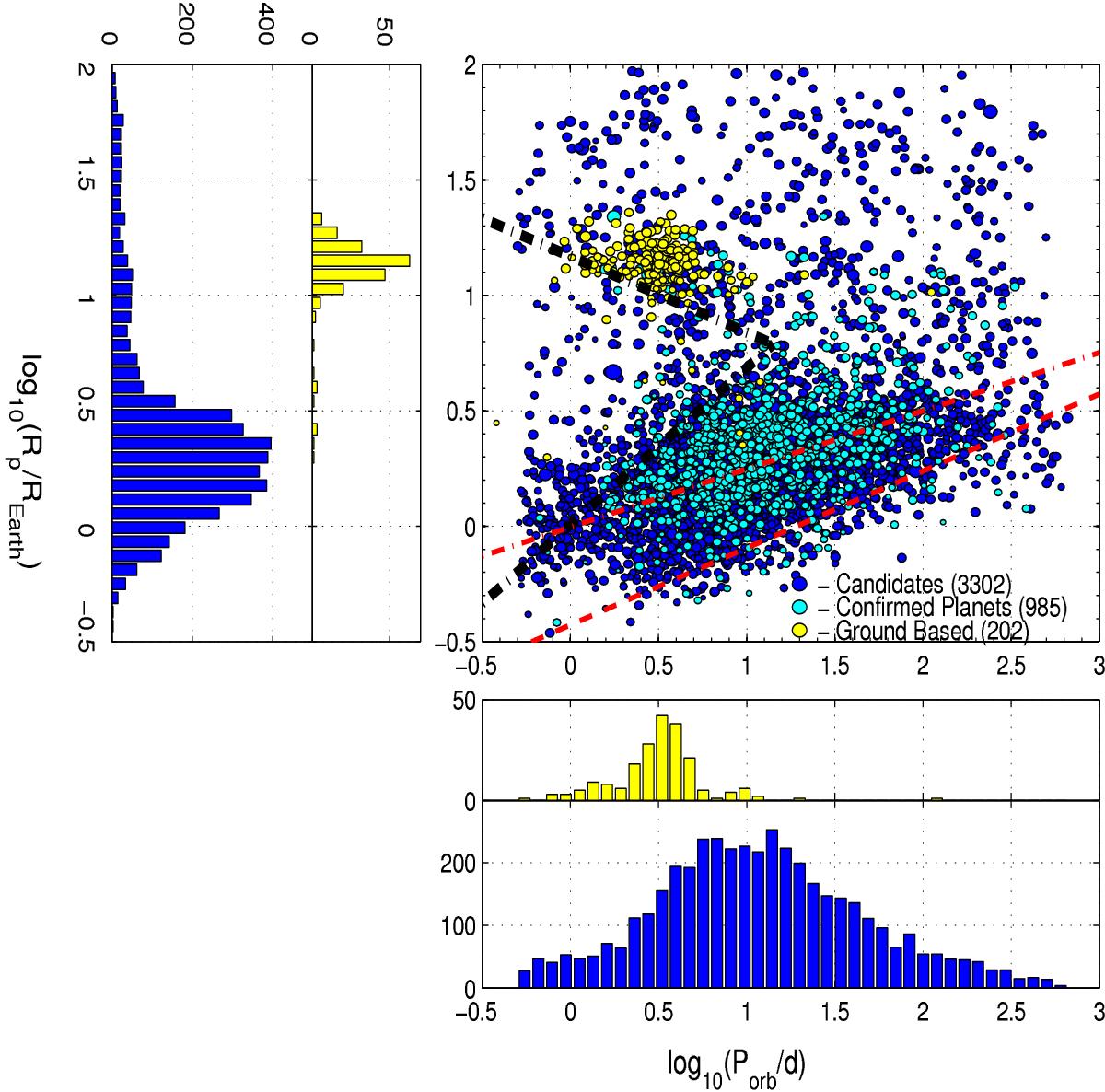Fig. 4

Planetary radii as a function of planetary orbital periods for the ground-based transit searches (202 yellow points), Kepler planet candidates (3302 blue points), and Kepler confirmed planets (985 cyan points). The two dash-dotted black lines are our best-estimate desert boundaries, as derived in Sect. 5. The upper (dash-dotted) red line shows the center of the ridge and the lower (dashed) red line the observational detection bias. The histograms below and to the left of the main panel separately show the Kepler detections, candidates and confirmed planets alike, and the ground-based detections.
Current usage metrics show cumulative count of Article Views (full-text article views including HTML views, PDF and ePub downloads, according to the available data) and Abstracts Views on Vision4Press platform.
Data correspond to usage on the plateform after 2015. The current usage metrics is available 48-96 hours after online publication and is updated daily on week days.
Initial download of the metrics may take a while.


